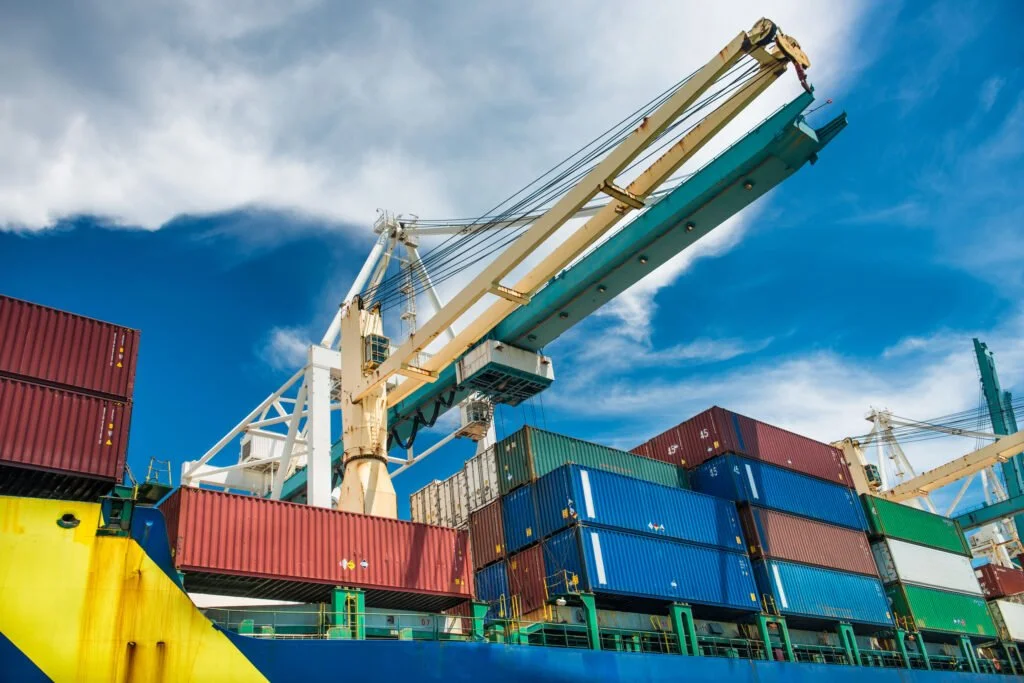As companies continue to struggle to get goods to their customers, many are rapidly rethinking their long-held beliefs in the Just in Time supply chain model and instead considering alternative manufacturing sources. The lowest price is no longer the most important factor. Import tariffs, shipping times, and geopolitical forces are now more important than ever. A whole new vocabulary is emerging as brands rethink their logistics strategy. Instead of offshoring, companies are returning to onshoring, nearshoring or reshoring.
The COVID-19 pandemic has continued to drive disruption in many aspects of our daily lives, but where most shoppers are feeling it today is in their wallets. Inflation is soaring, and many goods are simply not available. For example, in the United States, baby formula shortages left many parents unable to purchase an essential, staple item. Factory shutdowns and import regulations contributed to this crisis, and still, consumers are finding that many of their favourite products aren’t on shelves.
What Is Onshoring, Nearshoring and Reshoring?
Liberalised trade policies, increased communication and technology, and globalisation spurred the offshoring movement in manufacturing and technology beginning in the 1980s. China, India, Vietnam, the Philippines, and many other countries in the Asia Pacific region were top destinations for companies looking to cut costs on labour and materials. Offshoring saved significant sums of money even when shipping costs and time were factored in.
Now, tariffs, the ongoing COVID-19 pandemic, and tenuous geopolitical relationships are bringing production back home, or at least close to it.
Companies are thinking about how to make their supply chains shorter and more robust. The construction of new manufacturing facilities in the US has soared 116% over the past year, dwarfing the 10% gain on all building projects combined, according to Dodge Construction Network. However, onshoring isn’t the only new buzzword. Companies are also reshoring and nearshoring.
Onshoring and Reshoring
Onshoring or reshoring is when a company moves manufacturing operations from foreign soil back to the United States. Companies that are onshoring include Intel which is building a chip manufacturing plant outside of Phoenix, Arizona. Shoe company, New Balance is also beefing up its US manufacturing presence with the renovation of an 80,000-square-foot facility in Massachusetts. And, the trend is accelerating. According to Kearney’s 2021 Reshoring Index, nearly 80% of companies have shifted at least some production back to the US or plan to in the next three years. At least 15% are considering it due to high tariffs and ongoing supply chain challenges.
Nearshoring
Nearshoring happens when an organisation decides to transfer work to companies that are less expensive and geographically closer. For instance, some US companies are choosing to nearshore their operations by pulling out of China and building in Mexico, Central America, or Canada instead.
European companies are shifting manufacturing closer to home as well. IKEA has been moving production from East Asia to Turkey since 2021 in order to expedite product delivery to European stores. In addition, German companies are eyeing regions like the Western Balkans to replace East Asian production.
The Supply Chain’s Perfect Storm

For decades, globalisation – including favourable trade deals, political stability, low taxes and wages and oil prices – lured manufacturing and production outside of businesses’ home countries. This kept margins healthy, retail prices attractive and customers and stockholders alike happy.
The pandemic, however, exposed weak links in a supply chain that, up until 2020, received little to no attention. Factories across China shuttered due to lockdowns. Consumer demand skyrocketed as spending shifted from dining out and travel to household supplies and electronics. Ports and terminals were backed up, ocean freight rates rose exponentially and inflation in the US rose to 40-year highs with similar rates in the UK. Russia’s invasion of Ukraine further slowed trade and sanctions against Russia drove fuel prices up.
The turmoil and disruption shone a bright light on industries and practices that had been mostly taken for granted. Brands and producers have turned their attention to creating better, more resilient supply chain strategies. For some brands, the solution has been to diversify production, shipping and distribution – including moving them out of China.
Is Moving Out of China the Right Move?
COVID-19 accelerated the reshoring movement, but the US-China trade war planted the seeds for organisations to make plans to relocate. While some organisations are moving at least some of their manufacturing out of China, taking that strategy shift out of the boardroom and into the factory has proved difficult.
In an interview with CNBC, Vishrut Rana, Singapore-based economist at S&P Global Ratings, noted, “It is very difficult to match the scale and scope of China’s supply chains outside China at the moment.” Supply chains for specific products may be easier to move to other locations, but China’s supply chain dominance still reigns supreme.
Furthermore, reshoring might not be suitable for every organisation. Here are a few things to consider:
Con: The Labour Market Shortage
In the US, one of the biggest challenges in manufacturing is that there simply aren’t enough skilled workers to fill jobs. Finding these skilled workers is a challenge in the US; however, it’s also a squeeze on the Chinese labour market. By 2025, there will be a shortage of nearly 30 million workers in the manufacturing sector in China. Some of this can be offset with automation, which requires fewer workers to maintain the same level of output.
Pro: Greater Control Over the Supply Chain
Organisations in nearly every sector have been plagued with delayed shipments and low stock as Chinese factory outputs continue to contract. Even factories that are in production are struggling to source raw materials and transport goods for shipment. This means that many pieces of the fragile supply chain are out of control for many organisations. The shorter the supply chain, the fewer unknown variables to contend with.
Pro: Fewer Tariffs
The China-US trade war is far from over. President Biden has kept in place many of the tariffs implemented during President Trump’s term. While the China tariffs may ease soon to reduce the effects of inflation, changing sentiment in trade policy will remain consistent. Many companies are choosing to stay closer to home and eliminate the tariffs altogether.
Repair a Broken Supply Chain with a Multi Channel Fulfilment Strategy
Deciding to reshore is not a cheap or simple switch. Many organisations are struggling to find the best way to continue to supply goods to their customers without raising prices or falling victim to fragile supply chains. And, the disruption to the supply chain has changed it permanently. Today, organisations are thinking about their supply chains differently — the focus is on building a solution that’s flexible, agile, and fast.
To do this, some companies are turning to a multi shore or omnishore strategy. This means shifting production to multiple locations to diversify where they’re sourcing and avoid relying on a single source. Instead of focusing only on cost, organisations are thinking about building in redundancies. If one supplier cannot fulfil, they have plenty of backup to continue the flow of goods without interruption.
And finally, diversification in the supply chain ensures that organisations can pivot quickly to a new supplier or shift production to fill the gaps no matter what geopolitical issues arise.
Scalefast helps businesses overcome their supply chain woes. As a Merchant of Record, we have warehouses around the world and can build a strategy that minimises disruptions. Instead of relying on single suppliers, we can help DTC brands achieve better costs and reduce risk due to fragmented supply chain issues with multiple suppliers near and far.
Learn more about how ESW can help you shore up your supply chain with best-in-class cross-border solutions.





